
The first-ever FIDE & WFCC World Chess Solving Championships for juniors and cadets brought together 291 participants across two venues: Brazil and Italy. These landmark events showcased the immense potential of youngsters, particularly highlighting the equality of talent between girls and boys in chess problem solving.
The World Federation for Chess Composition (WFCC) partnered with FIDE to organize these solving championships as part of the FIDE Centenary celebrations. Held during rest days of FIDE’s Junior and Cadet championships, the events featured six age categories with identical sets of problems for both boys and girls. Although girls had the option to compete in the open category alongside boys, none chose to do so. However, comparing the results across categories demonstrated that girls, competing with no outside influence or prejudices about genders, performed at an equally high level.
Had they opted to compete directly with boys, the girls would have earned five medals in four out of six categories. Notably, in the U14 category, Kesaria Mgeladze from Georgia (pictured below) outperformed all the boys, with two other girls finishing in the top four.

Photo: X
On November 4, Florianópolis, the capital of southern Brazil’s Santa Catarina state, hosted the 1st FIDE & WFCC World Youth Chess Solving Championship. WFCC Vice-President Dinu-Ioan Nicula selected the competition sets, featuring eight problems per age group (U14, U16, and U18), to be solved within 90 minutes. Each set included three problems in 2 moves, two in 3 moves, one in 4 moves, and two endgame studies.
The Brazilian WFCC team, engaged by organizers, came from Rio de Janeiro, almost 900 km away. The FIDE Master of Chess Composition Ricardo de Mattos Vieira was the solving director, with Bruno Perez as his assistant, while the WFCC delegate of Brazil Marcos Maldonado Roland handled all organizational activities, including a series of solving events and free online lessons across Brazil. Despite only 63 participants attending, the quality of their performance was evident, with no participant finishing with zero points. Naturally, only the well-prepared solvers opted to spend the free day solving some extraordinary tasks instead of resting or preparing for the final rounds of their most important chess tournament.

The solving hall in Florianópolis Photo: Pedro Ferreira Lage
Unofficial results were emailed to participants on the evening of November 4, with scanned solving sheets provided when resolving protests. By the morning of November 5, the winners of the inaugural WYCSC were officially announced:
Open and Girls up to 14: Final standings, Problems, Solutions
Open and Girls up to 16: Final standings, Problems, Solutions
Open and Girls up to 18: Final standings, Problems, Solutions
Unlike tournament players, solvers can move chess pieces for both sides, but the trickiest part is putting yourself in an imaginary opponent’s shoes and thinking from their perspective. It was particularly evident in solving interesting endgame that decided medalists in the U18 category. Black has some hidden sources to play for a win, and White has to find equally surprising replies to maintain equality!
№1 Alois Wotawa, Deutsche Schachzeitung, 1944
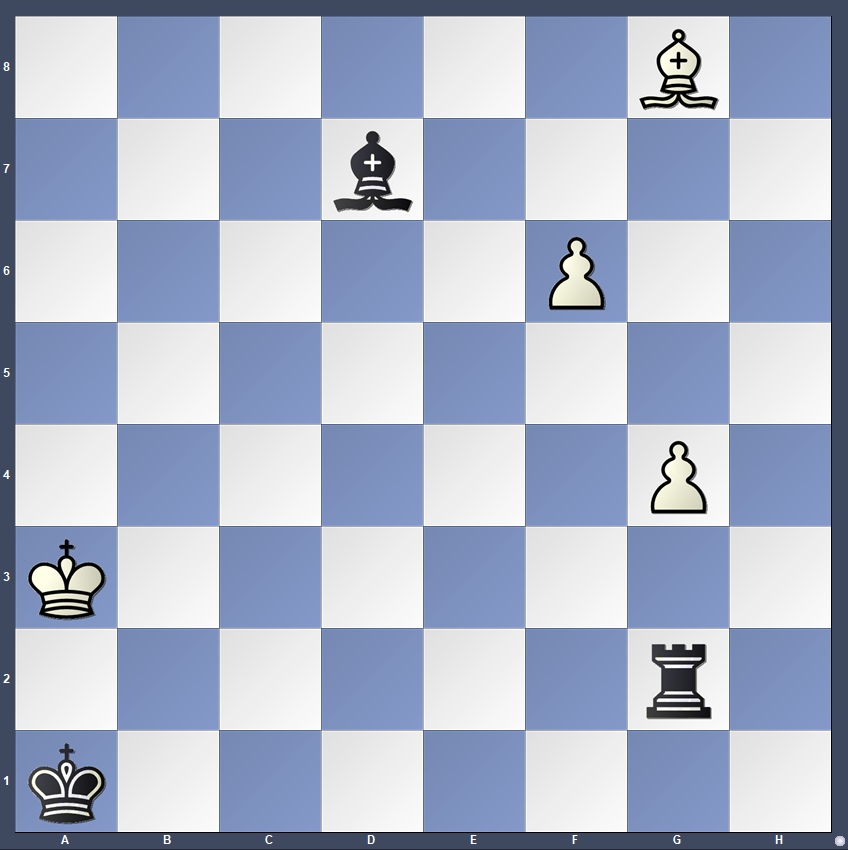
White to play and draw
Based on the participation stats, the younger players are, the more eagerly they accept new chess challenges. It was visible through the comparison of numbers between U14, U16, and U18 categories in Brazil, and even more evident when seeing U8, U10, and U12 years in Montesilvano, Italy, where the 1st FIDE & WFCC World Cadets Chess Solving Championship took place on November 21. The participation in the event that attracted 228 solvers far exceeded the youth championship in Brazil, with every category boasting more competitors than all three Brazilian groups combined.
The problems and studies were again selected by Mr. Nicula, who officiated the competition on the spot. Together with him, the WFCC Secretary Mohammad Alhallak has been engaged in all the activities, including the presentation of the competition in the new WFCC account in the Chess-Results server.
Cadets had six problems to handle within 60 minutes, and for many of them, it was too short a time. In the U8 category, there were five problems in two moves and one endgame to solve, but if you think that a two-mover is easier than an endgame study, you should check the page with Results and Problems’ Difficulty and see that it was the other way round.
Even the two-mover starter (on the diagram below), although the easiest one, was a hard nut to crack, most notably for Rayna Yan from the USA. She finished all six problems in just 35 minutes and had the best time (the first tiebreaker), but a single error in this problem prevented her from matching the achievement of Kesaria Mgeladze and becoming the absolute winner among both boys and girls in the U8 category:
№2 Kristian Nielsen, Ostledingen, 1957
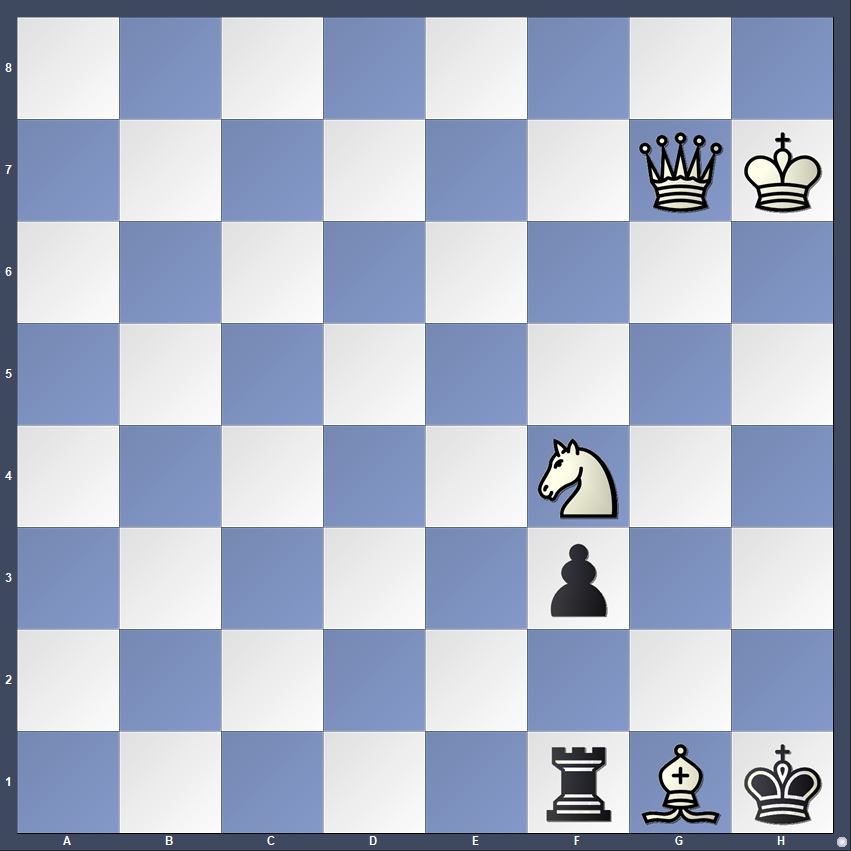
White to play and mate in 2 moves
Each correct solution is worth 5 points. For a mate-in-two problem, it is enough to write the 1st move of White to get the full score, but those who hurry and write a wrong one receive none! The photo below has caught the moment of truth: will the boy stick to the wrong key-move of the problem above?
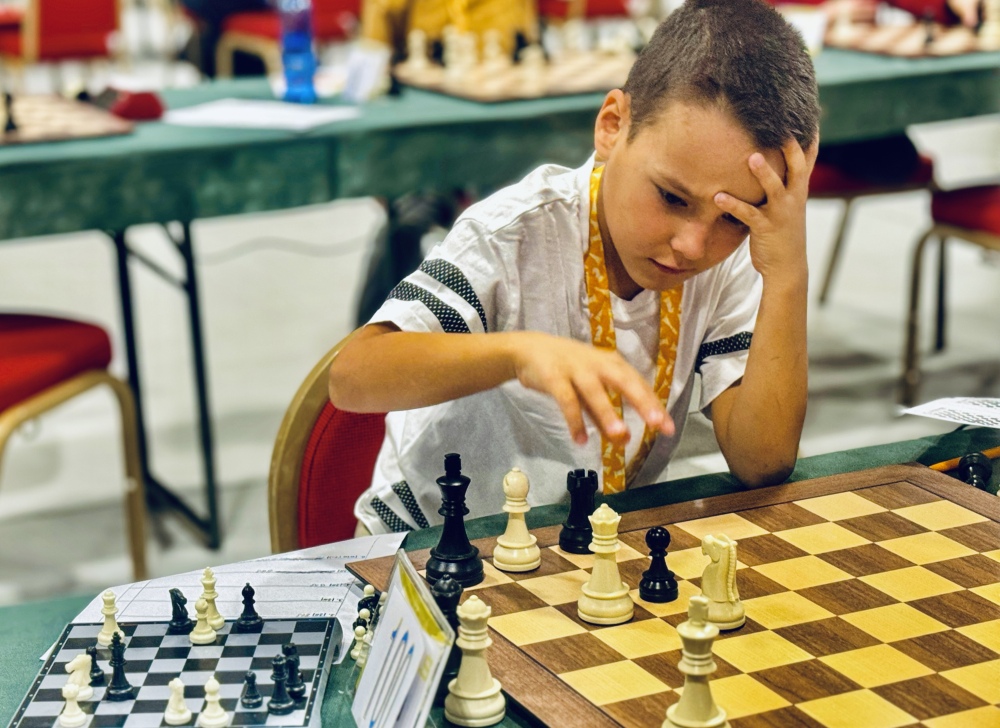
While solving one problem, the boy had already set another one on the smaller board Photo: Patricia Claros Aguilar
There were many such mistakes made in a rush, and Rayna Yan wasn’t the only girl who failed to do better than all the boys because of a single wrong move. Sofia Baghramyan from Armenia missed the same chance, but her 2nd place in the overall U8 standings and the 1st one among girls was a good consolation.
The U10 group of 91 solvers was the largest one. Anand Tsogtbileg from Mongolia achieved a perfect score, collecting all 30 points in 51 minutes – the only flawless performance across six groups.

It is crucial to write down all the solutions correctly Photo: Patricia Claros Aguilar
Starters in each group are usually easier than other problems, and the one in the U10 category was no exception, with 29 correct solutions among the top 30 solvers:
№3 Vladimir Shmatov, Mat-Pat, 1994
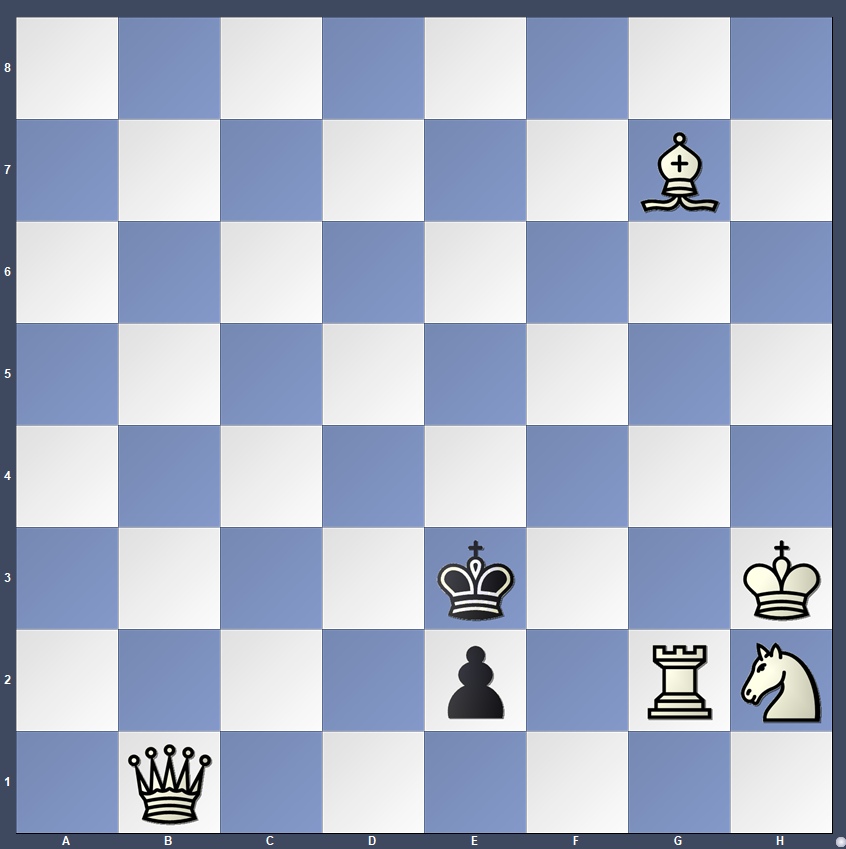
White to play and mate in 2 moves
However, problems like this one, with powerful white pieces against almost no forces of Black, were unusual for many young players. It’s not easy to adjust to a new demand: not only to give mate, but to find the only possible way to achieve it just in two moves.

A girl solving problem №3 presented above Photo: Patricia Claros Aguilar
Finally, the problems for U12 group proved to be too difficult for more than a half of the participants. One of the reasons was failure to write the solution of the starter correctly:
№4 Vyacheslav Pilchenko, 6-8. Pr. Bron MT, 1992
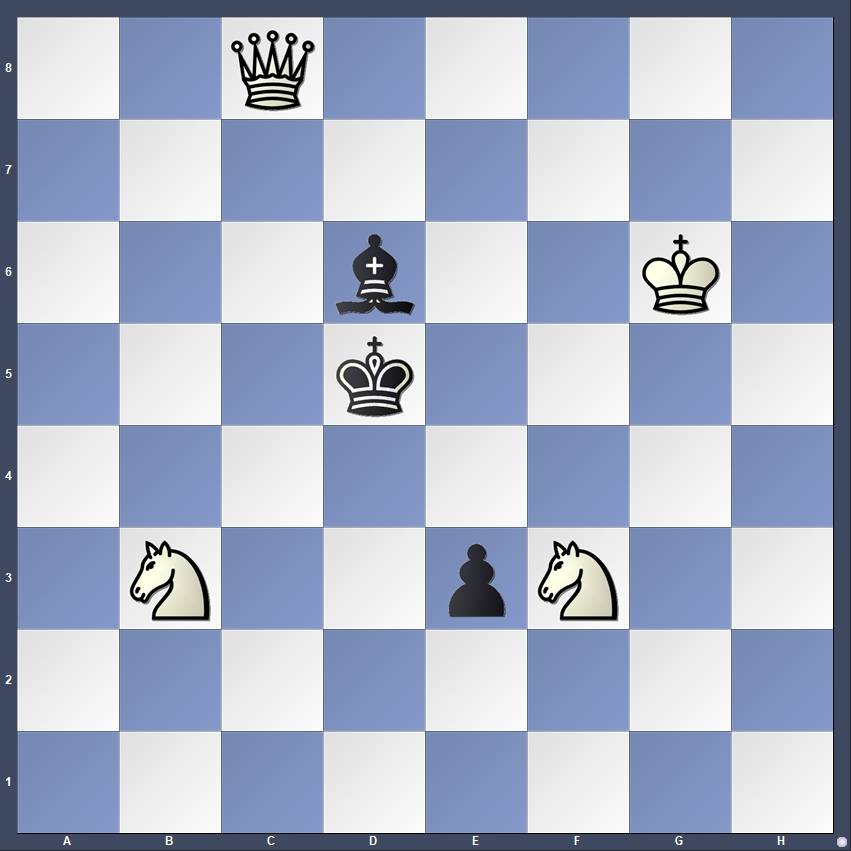
White to play and mate in 2 moves
All the solvers who wrote 1. Nd4 as the first move of White lost the expected points since both white knights can go to d4-square and only one of them is the correct key-piece! While not so complicated to solve, this problem showed that either many of the U12 players had issues with chess notation, or they didn’t read the official Regulations, where such a case was presented and clearly explained. In the WFCC Solving Calendar you may find all the details about FIDE & WFCC solving championships, including results, problems, and solutions for all the age categories.
The first FIDE youth championships dated back to 2006, thanks to Georgian Grandmaster of Chess Composition David Gurgenidze and his compatriot Akaki Iashvili, the FIDE Special Tasks Director and Events Commission Chairman. Till 2023, there were five such competitions, all of them led by Mr. Gurgenidze, and mostly happening when FIDE youth events were organized in Georgia.
This year, for the first time, these solving championships were a joint project of FIDE and WFCC. The media promotion was broad and intense, including a series of free online solving lessons for 420 participants around the world, given by young Indian promoter Anirudh Daga and the WFCC President Marjan Kovačević. Several articles were published on the FIDE website and FIDE & WFCC social media; the famous Indian chess promoter Sagar Shah created a promo video, and the Fujairah team created another one. Posted on the FIDE Facebook channel, their video attracted over 11000 views, more than any WFCC post before.
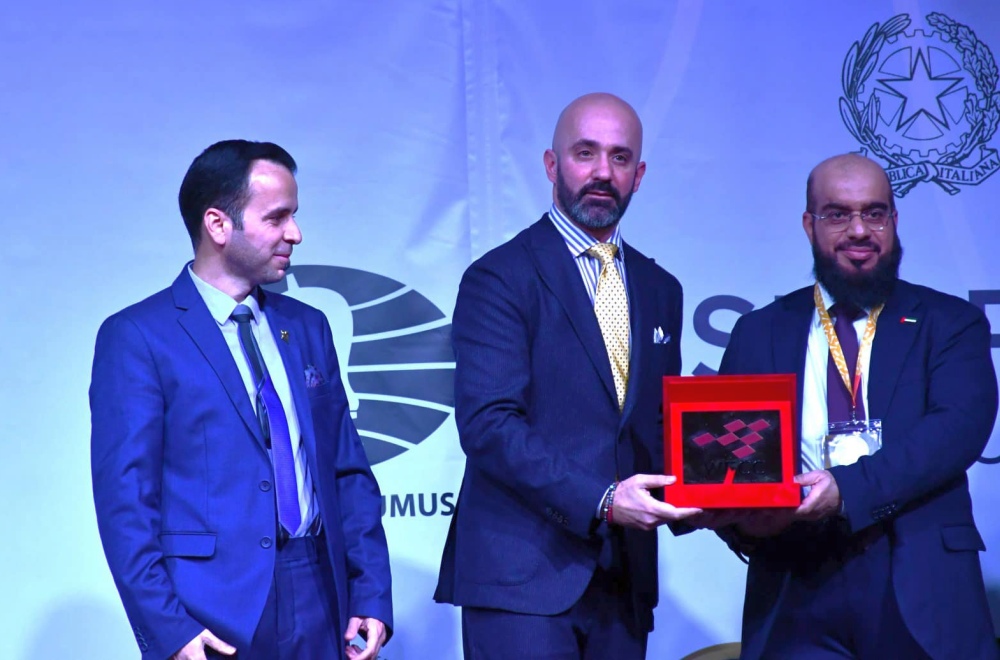
Mohammad Alhallak, Roberto Mogranzini and Abdulla Ali Aal Barket Photo: Patricia Claros Aguilar
The WFCC Vice-President Abdulla Ali Aal Barket attended the closing ceremony in Montesilvano to mark the beginning of this cooperation with a special WFCC plaque presented to the main chess organizers Nadia Ottavi and Roberto Mogranzini. We hope the quantity and quality of these joint competitions will keep rising, extending and enriching the overall chess knowledge of new generations from 2025 on.
Solutions:
№1 Alois Wotawa, Deutsche Schachzeitung, 1944
1.f7! Rf2 2.g5 Rf4 3.g6 Ba4! 4.f8Q! Rxf8 5.Bd5! Rf4 (or first 5…Bc2 with the idea of 6…Rf4 followed by Ra4#) 6.g7 Bc2 (Bd1) 7.Bb3! Bxb3 8.g8Q Bxg8 stalemate.
№2 Kristian Nielsen, Ostledingen, 1957
1.Nh3! zz 1…f2 2.Qb7# 1…R ~ 2.Nxf2# 1…Rxg1 2.Qxg1#
№3 Vladimir Shmatov, Mat-Pat, 1994
1.Rf2! zz 1…Kxf2 2.Bd4# 1…Kd2 2.Nf1# 1…e1 ~ 2.Ng4#
№4 Vyacheslav Pilchenko, 6-8. Pr. Bron MT, 1992
1.Nfd4! – 2.Qe6# 1…Be5 2.Qc6# 1…Ke5/Ke4 2.Qf5# 1.Nbd4? 1…Bc7!
Written by Marjan Kovačević, WFCC President
Official website: WFCC – World Federation for Chess Composition

